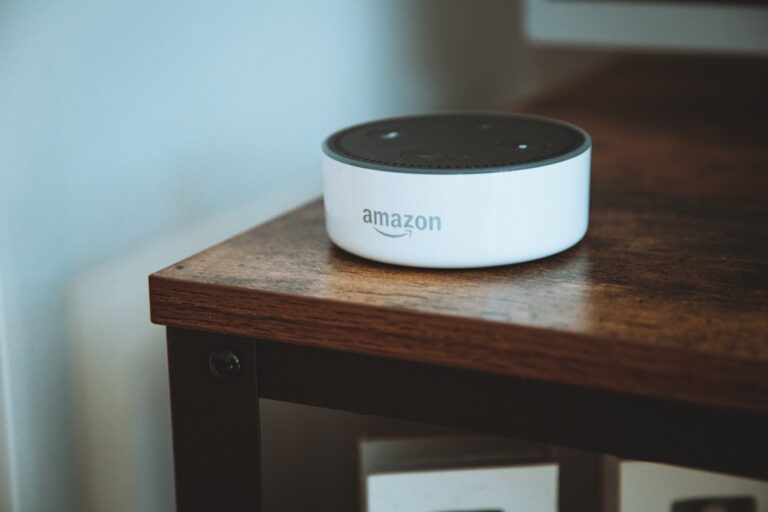The advent of personal AI assistants marks a significant milestone in the evolution of technology, fundamentally altering how individuals interact with their devices and manage their daily tasks. These intelligent systems, designed to understand and respond to human language, have become integral to modern life, offering a blend of convenience, efficiency, and personalization. From voice-activated devices like Amazon’s Alexa and Apple’s Siri to more sophisticated platforms like Google Assistant, personal AI assistants are reshaping the landscape of human-computer interaction.
They serve as digital companions, capable of performing a myriad of functions ranging from setting reminders and managing schedules to controlling smart home devices and providing real-time information. The rise of personal AI assistants is not merely a technological trend; it reflects a broader shift towards automation and artificial intelligence in everyday life. As these systems become more advanced, they are increasingly capable of understanding context, learning user preferences, and adapting to individual needs.
This evolution is driven by advancements in natural language processing, machine learning, and data analytics, which enable these assistants to provide more accurate and relevant responses. The implications of this technology extend beyond mere convenience; they touch on aspects of productivity, accessibility, and even social interaction, as users begin to rely on these digital entities for a variety of tasks.
Early Development and Adoption of Personal AI Assistants
The journey of personal AI assistants began in the early 2000s with the introduction of rudimentary voice recognition software. Early iterations were limited in functionality and often struggled with understanding natural language. However, the groundwork laid by these initial developments paved the way for more sophisticated systems.
One notable example is IBM’s Watson, which gained fame for its ability to compete on the quiz show “Jeopardy!” in 2011. This event showcased the potential of AI in processing vast amounts of information and understanding complex queries, setting the stage for future personal assistants. The commercial launch of Apple’s Siri in 2011 marked a turning point in the adoption of personal AI assistants.
Siri’s integration into the iPhone provided users with a user-friendly interface that allowed them to interact with their devices using voice commands. This innovation sparked interest from other tech giants, leading to the development of competing products such as Google Now and Microsoft’s Cortana. The rapid adoption of smartphones during this period created an ideal environment for personal AI assistants to flourish, as users sought ways to enhance their mobile experience.
By 2015, the market had expanded significantly, with millions of users embracing these technologies for their convenience and efficiency.
Integration of Personal AI Assistants into Daily Life

As personal AI assistants became more prevalent, their integration into daily life transformed how individuals approached routine tasks. Users began to rely on these digital companions for a wide range of activities, from managing calendars and sending messages to providing weather updates and answering trivia questions. The ability to perform tasks hands-free allowed users to multitask effectively, enhancing productivity in both personal and professional settings.
For instance, a busy parent might use an AI assistant to set reminders for school events while simultaneously preparing dinner, illustrating how these tools can streamline daily responsibilities. Moreover, the integration of personal AI assistants into various applications has led to a more seamless user experience. Many individuals now interact with their assistants through multiple devices—smartphones, smart speakers, wearables—creating an ecosystem where information is readily accessible regardless of location.
This interconnectedness fosters a sense of continuity; users can initiate a task on one device and complete it on another without interruption. The convenience offered by personal AI assistants has not only changed individual habits but has also influenced broader societal trends, such as the increasing reliance on technology for communication and information retrieval.
Advancements in Personal AI Assistant Technology
| Metrics | 2018 | 2019 | 2020 |
|---|---|---|---|
| Number of Personal AI Assistant Users | 500 million | 700 million | 1 billion |
| Accuracy of Voice Recognition | 90% | 95% | 98% |
| Integration with Smart Home Devices | Limited | Improved | Seamless |
| Tasks Performed by AI Assistant | Basic commands | Complex commands | Multi-step tasks |
The technological advancements driving personal AI assistants are profound and multifaceted. Natural language processing (NLP) has seen significant improvements, enabling these systems to understand context and nuances in human speech better than ever before. This capability allows for more natural interactions between users and their assistants, reducing frustration associated with misinterpretations or incorrect responses.
For example, advancements in sentiment analysis enable personal AI assistants to gauge user emotions based on voice tone or word choice, allowing them to respond more empathetically. Machine learning algorithms have also played a crucial role in enhancing the functionality of personal AI assistants. These algorithms allow the systems to learn from user interactions over time, tailoring responses and suggestions based on individual preferences and behaviors.
For instance, if a user frequently asks about traffic conditions during their morning commute, the assistant can proactively provide updates without being prompted. This level of personalization not only improves user satisfaction but also fosters a deeper sense of trust in the technology.
Personal AI Assistants in Smart Homes and IoT Devices
The integration of personal AI assistants into smart home ecosystems represents one of the most transformative applications of this technology. Smart home devices—ranging from thermostats and lighting systems to security cameras—can be controlled through voice commands issued to an AI assistant. This capability allows users to create customized environments that enhance comfort and energy efficiency.
For example, a user can instruct their assistant to adjust the thermostat based on their daily schedule or turn off lights when they leave home, showcasing how these systems can contribute to both convenience and sustainability. Moreover, the interoperability between personal AI assistants and Internet of Things (IoT) devices has led to innovative solutions for home management. Users can set up routines that automate multiple tasks simultaneously; for instance, saying “Goodnight” could trigger the assistant to lock doors, turn off lights, and adjust the thermostat for optimal sleeping conditions.
This level of automation not only simplifies daily routines but also enhances security by ensuring that essential tasks are completed consistently. As smart home technology continues to evolve, the role of personal AI assistants will likely expand further, integrating with an even broader array of devices and services.
Personal AI Assistants in Healthcare and Wellness

The application of personal AI assistants in healthcare is an emerging field with significant potential to improve patient outcomes and streamline medical processes. These digital companions can assist individuals in managing their health by providing reminders for medication schedules, tracking symptoms, or offering personalized wellness tips based on user data. For instance, an AI assistant could remind a patient with diabetes to check their blood sugar levels at specific times or suggest dietary adjustments based on their health goals.
In addition to individual health management, personal AI assistants are being utilized in telemedicine applications. They can facilitate communication between patients and healthcare providers by scheduling appointments or providing preliminary assessments based on user-reported symptoms. This capability not only enhances access to care but also empowers patients to take an active role in their health management.
As healthcare systems increasingly adopt digital solutions, the integration of personal AI assistants is likely to play a pivotal role in shaping patient experiences and outcomes.
Ethical and Privacy Considerations with Personal AI Assistants
As personal AI assistants become more embedded in daily life, ethical and privacy considerations have emerged as critical topics of discussion. The collection and analysis of user data raise concerns about how this information is stored, used, and shared by companies developing these technologies. Users often provide sensitive information—such as health data or personal preferences—when interacting with their assistants, leading to questions about consent and data security.
High-profile data breaches have underscored the importance of robust security measures to protect user information from unauthorized access. Furthermore, there are ethical implications surrounding the potential for bias in AI algorithms. If not carefully managed, these biases can lead to unequal treatment or misrepresentation of certain groups within the data used to train personal AI assistants.
For example, if an assistant’s training data predominantly reflects one demographic group, it may struggle to understand or respond appropriately to users from diverse backgrounds. Addressing these ethical challenges requires ongoing dialogue among technologists, ethicists, policymakers, and users to ensure that personal AI assistants are developed responsibly and equitably.
Future Trends and Potential Impact of Personal AI Assistants
Looking ahead, the future of personal AI assistants is poised for continued growth and innovation. One significant trend is the increasing emphasis on contextual awareness; future iterations may be able to understand not just what users say but also the context in which they say it. This capability could lead to more intuitive interactions where assistants anticipate needs based on situational cues—such as suggesting an umbrella when rain is forecasted during a user’s commute.
Additionally, advancements in emotional intelligence within AI systems may enhance user experiences by allowing assistants to respond empathetically during interactions. As these technologies evolve, they could play a more significant role in mental health support by providing companionship or resources tailored to individual emotional states. The potential impact of personal AI assistants extends beyond individual users; they may reshape industries by streamlining operations and enhancing customer experiences across various sectors.
As businesses adopt these technologies for customer service or operational efficiency, the demand for skilled professionals who can develop and manage AI systems will likely increase. In summary, personal AI assistants are at the forefront of technological innovation, influencing how we live, work, and interact with our environments. Their evolution reflects broader trends in artificial intelligence and automation while raising important ethical considerations that must be addressed as we move forward into an increasingly digital future.
FAQs
What are personal AI assistants?
Personal AI assistants are virtual digital assistants that use artificial intelligence to perform tasks and provide information to users. They can be found in smartphones, smart speakers, and other devices.
How do personal AI assistants work?
Personal AI assistants work by using natural language processing and machine learning algorithms to understand and respond to user commands and queries. They can perform tasks such as setting reminders, sending messages, and providing weather updates.
What are some examples of personal AI assistants?
Some examples of personal AI assistants include Apple’s Siri, Amazon’s Alexa, Google Assistant, and Microsoft’s Cortana. These assistants are integrated into various devices and platforms to provide users with personalized assistance.
How are personal AI assistants used in daily life?
Personal AI assistants are used in daily life to perform a wide range of tasks, such as managing schedules, controlling smart home devices, making online purchases, and providing information on various topics. They can also help with productivity and organization.
What is the future of personal AI assistants in daily life?
The future of personal AI assistants in daily life is expected to involve more advanced capabilities, improved natural language understanding, and greater integration with various devices and services. They may also play a larger role in areas such as healthcare, education, and entertainment.











